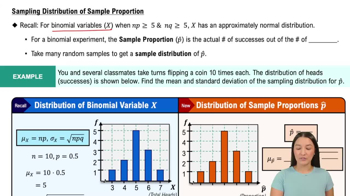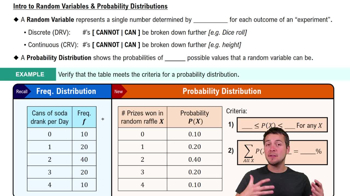Determine the level of measurement of the data listed on the horizontal and vertical axes in the figure.
Table of contents
- 1. Intro to Stats and Collecting Data1h 14m
- 2. Describing Data with Tables and Graphs1h 55m
- 3. Describing Data Numerically2h 5m
- 4. Probability2h 16m
- 5. Binomial Distribution & Discrete Random Variables3h 6m
- 6. Normal Distribution and Continuous Random Variables2h 11m
- 7. Sampling Distributions & Confidence Intervals: Mean3h 23m
- Sampling Distribution of the Sample Mean and Central Limit Theorem19m
- Distribution of Sample Mean - Excel23m
- Introduction to Confidence Intervals15m
- Confidence Intervals for Population Mean1h 18m
- Determining the Minimum Sample Size Required12m
- Finding Probabilities and T Critical Values - Excel28m
- Confidence Intervals for Population Means - Excel25m
- 8. Sampling Distributions & Confidence Intervals: Proportion1h 12m
- 9. Hypothesis Testing for One Sample3h 29m
- 10. Hypothesis Testing for Two Samples4h 50m
- Two Proportions1h 13m
- Two Proportions Hypothesis Test - Excel28m
- Two Means - Unknown, Unequal Variance1h 3m
- Two Means - Unknown Variances Hypothesis Test - Excel12m
- Two Means - Unknown, Equal Variance15m
- Two Means - Unknown, Equal Variances Hypothesis Test - Excel9m
- Two Means - Known Variance12m
- Two Means - Sigma Known Hypothesis Test - Excel21m
- Two Means - Matched Pairs (Dependent Samples)42m
- Matched Pairs Hypothesis Test - Excel12m
- 11. Correlation1h 6m
- 12. Regression1h 50m
- 13. Chi-Square Tests & Goodness of Fit1h 57m
- 14. ANOVA1h 57m
1. Intro to Stats and Collecting Data
Intro to Stats
Problem 1.Q.8
Textbook Question
Which technique used in Exercise 7 could lead to a biased study? Explain.
 Verified step by step guidance
Verified step by step guidance1
Identify the techniques used in Exercise 7. These could include methods such as convenience sampling, voluntary response sampling, random sampling, or stratified sampling. Each technique has its own strengths and weaknesses.
Understand the concept of bias in a study. Bias occurs when the sampling method systematically favors certain outcomes, leading to results that do not accurately represent the population.
Evaluate each technique from Exercise 7 for potential sources of bias. For example, convenience sampling might lead to bias because it selects individuals who are easiest to reach, which may not represent the entire population.
Explain why the identified technique could lead to bias. For instance, voluntary response sampling could result in bias because individuals with strong opinions are more likely to respond, skewing the results.
Conclude by summarizing which technique is most likely to lead to a biased study and why, based on the evaluation of its potential to systematically favor certain outcomes.
 Verified video answer for a similar problem:
Verified video answer for a similar problem:This video solution was recommended by our tutors as helpful for the problem above
Video duration:
6mPlay a video:
Was this helpful?
Key Concepts
Here are the essential concepts you must grasp in order to answer the question correctly.
Bias in Research
Bias in research refers to systematic errors that can affect the validity of study results. It can arise from various sources, such as sample selection, data collection methods, or analysis techniques. Understanding bias is crucial because it can lead to incorrect conclusions, making it essential to identify and mitigate potential biases in any study.
Recommended video:
Guided course

Step 1: Write Hypotheses
Sampling Techniques
Sampling techniques are methods used to select individuals from a population to participate in a study. Different techniques, such as random sampling or convenience sampling, can significantly influence the representativeness of the sample. If a biased sampling technique is used, it may not accurately reflect the population, leading to skewed results.
Recommended video:

Sampling Distribution of Sample Proportion
Confounding Variables
Confounding variables are external factors that can influence both the independent and dependent variables in a study, potentially leading to misleading results. Identifying and controlling for confounders is essential to ensure that the observed effects are truly due to the variables of interest, rather than other unrelated factors.
Recommended video:
Guided course

Intro to Random Variables & Probability Distributions

 2:13m
2:13mWatch next
Master Introduction to Statistics Channel with a bite sized video explanation from Patrick
Start learningRelated Videos
Related Practice
Textbook Question
1
views
